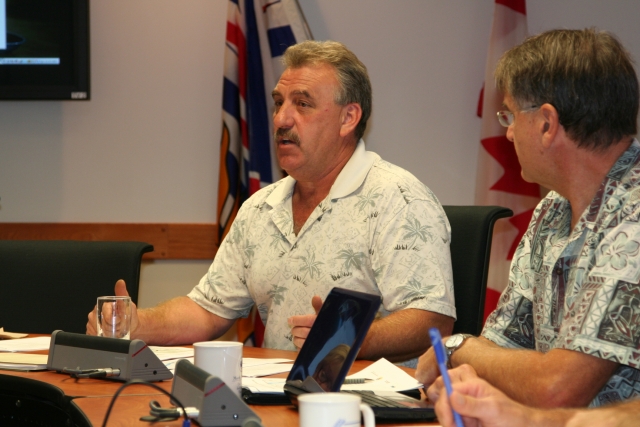Initial nephelometer studies show dust and exhaust source of poor air quality in Grand Forks
Dust from farmer’s fields and roads, exhaust from large trucks, construction and tourist traffic, and open burning cause for spikes in particulate matter readings during the first two months of the year-long Nephelometer Study in Grand Forks, according to a report.
Last week Wayne Kopan, manager of environment and building construction services for the City of Grand Forks, presented the first report on the progress of the nephelometer project to the Grand Forks Environment Committee.
“The end result at this point is that when we had cold and wet weather in June, levels (of fine particulate matter or PM2.5) were low and then as it got hotter, it got higher,” said Kopan during his presentation.
We attribute PM2.5 to exhaust and dust…the levels around the industrial park were not excessive.
Kopan said that even with the recent upgrade construction being done at Interfor, neither Interfor or Roxul emissions had anymore red — which indicates high PM2.5 readings on the graphs — during the first two months of the project than highway traffic or smoke from outlying wildfires.
The report concludes that the highway, Granby Road and Riverside Drive had the most elevated levels of PM2.5 readings. The report indicates that poor road maintenance, close proximity to the slag piles, dump traffic and P&D Logging traffic would contribute to those readings. It suggests improving Granby Road maintenance would help reduce those levels.
During the summer, the nephelometer team also set up a booth at the Grand Forks Farmer’s Market to get input. Roxul was the leading concern from residents.
So far, there has not been enough consistent data around Roxul to suggest it is a large contributor to elevated levels of PM 2.5,” the report conclusion states. “The recent stack elevation upgrades seem to be sufficient to disperse their emissions so that they are not of a concern.
The report went onto say more monitoring would be beneifical because two months is not long enough to “come up with any conclusive answers”.
Kopan anticipates that as we head into winter, woodstoves will likely be the key source of fine particulate matter in the local atmosphere.
While over the summer the city had a summer student conducting most of the data collection, this winter it will be done by a volunteer force of five or six people led by Chris Moslin.
Greenwood and Midway may also be included in the study. The nephelometer can be driven around while strapped into the passenger seat of the City’s hybrid Saturn Vue, or parked in targeted particulate heavy areas.
Kopan said over this winter, the nephelometer can be used to determine were heavy woodstove use areas are.
“Once we know the sources (of particulate matter in the air) our council can come up with answers and bylaws to help reduce it,” said Kopan.
Fine particulate in the air has been linked to aggravating cardiac and respiratory diseases, it also can be seen in the air as a haze and in deposits of dust on vehicles.






















